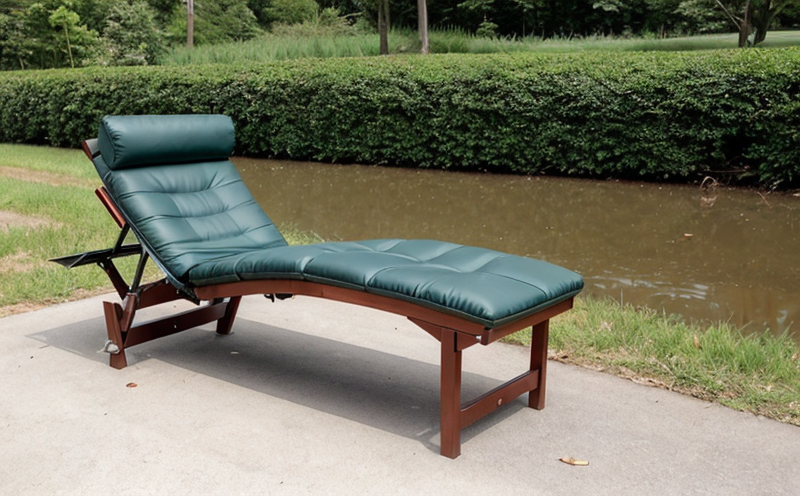Impact of material on reclining mechanism longevity
The Critical Factor in Furniture Industry Understanding the Impact of Material on Reclining Mechanism Longevity
In the ever-evolving world of furniture manufacturing, one critical aspect that often gets overlooked is the durability and lifespan of reclining mechanisms. A well-designed and durable reclining mechanism is not only essential for customer satisfaction but also plays a significant role in reducing maintenance costs, minimizing waste, and ultimately, contributing to a companys bottom line.
At Eurolab, we understand the importance of ensuring that reclining mechanisms last long enough to meet the demands of your customers. Our laboratory service specializes in assessing the impact of various materials on reclining mechanism longevity, helping you identify areas for improvement and develop data-driven decisions to optimize your product design.
Why is Material Selection Crucial for Reclining Mechanism Longevity?
Material selection is a critical step in designing a durable reclining mechanism. The wrong choice of material can lead to premature wear and tear, reduced functionality, and ultimately, a shorter lifespan. This not only affects the customer experience but also impacts your businesss profitability.
Here are some key reasons why material selection is crucial for reclining mechanism longevity
Cost Savings A well-designed reclining mechanism with durable materials can significantly reduce maintenance costs in the long run. By extending the lifespan of your product, you can minimize repair and replacement expenses.
Increased Customer Satisfaction Durable products lead to increased customer satisfaction, which translates to higher customer retention rates and positive word-of-mouth marketing.
Reduced Waste A longer-lasting reclining mechanism reduces electronic waste (e-waste) by minimizing the need for frequent replacements.
Competitive Advantage By prioritizing material selection and durability, you can differentiate your brand from competitors and establish a reputation for quality.
The Impact of Material on Reclining Mechanism Longevity Key Benefits
Our laboratory service at Eurolab assesses the impact of various materials on reclining mechanism longevity. Here are some key benefits of our service
Comprehensive Analysis Our expert team conducts a thorough examination of your product, identifying areas where material selection can be improved to enhance durability.
Data-Driven Decision Making We provide you with actionable insights and data-driven recommendations to optimize your product design and minimize maintenance costs.
Material Selection Expertise Our team has extensive knowledge of various materials used in reclining mechanisms, enabling us to suggest the most suitable options for your specific needs.
Improved Product Performance By selecting the right material, you can ensure that your products meet or exceed customer expectations, leading to increased satisfaction and loyalty.
Common Materials Used in Reclining Mechanisms
When it comes to designing reclining mechanisms, manufacturers often use a variety of materials. Some common materials include
Metal (Aluminum, Steel) Strong and durable, metal is often used in heavy-duty reclining mechanisms.
Plastic Lightweight and affordable, plastic is commonly used in residential furniture.
Rubber Durable and resistant to wear, rubber is often used for components like bushings and bearings.
Frequently Asked Questions (FAQs)
Here are some frequently asked questions about the impact of material on reclining mechanism longevity
Q Why is material selection critical for reclining mechanism longevity?
A Material selection affects the durability and lifespan of a reclining mechanism. The wrong choice can lead to premature wear and tear, reduced functionality, and ultimately, a shorter lifespan.
Q What are some key benefits of using Eurolabs laboratory service?
A Our service provides comprehensive analysis, data-driven decision making, material selection expertise, and improved product performance.
Q Which materials are commonly used in reclining mechanisms?
A Metal (aluminum, steel), plastic, and rubber are common materials used in reclining mechanisms.
Conclusion
At Eurolab, we understand the significance of ensuring that reclining mechanisms last long enough to meet customer demands. Our laboratory service is designed to assess the impact of various materials on reclining mechanism longevity, providing you with actionable insights to optimize your product design and minimize maintenance costs.
By prioritizing material selection and durability, you can establish a competitive advantage, reduce waste, and increase customer satisfaction. Dont compromise on quality choose Eurolab for expert guidance on material selection and reclining mechanism longevity.
About Eurolab
Eurolab is a leading laboratory service provider specializing in the assessment of materials used in reclining mechanisms. Our team of experts has extensive knowledge of various materials, enabling us to provide data-driven recommendations for optimizing product design and minimizing maintenance costs. With our laboratory service, you can ensure that your products meet or exceed customer expectations, leading to increased satisfaction and loyalty.
Join us in revolutionizing the furniture industry by prioritizing durability and longevity. Contact Eurolab today to learn more about our laboratory services and how we can help you achieve success.




